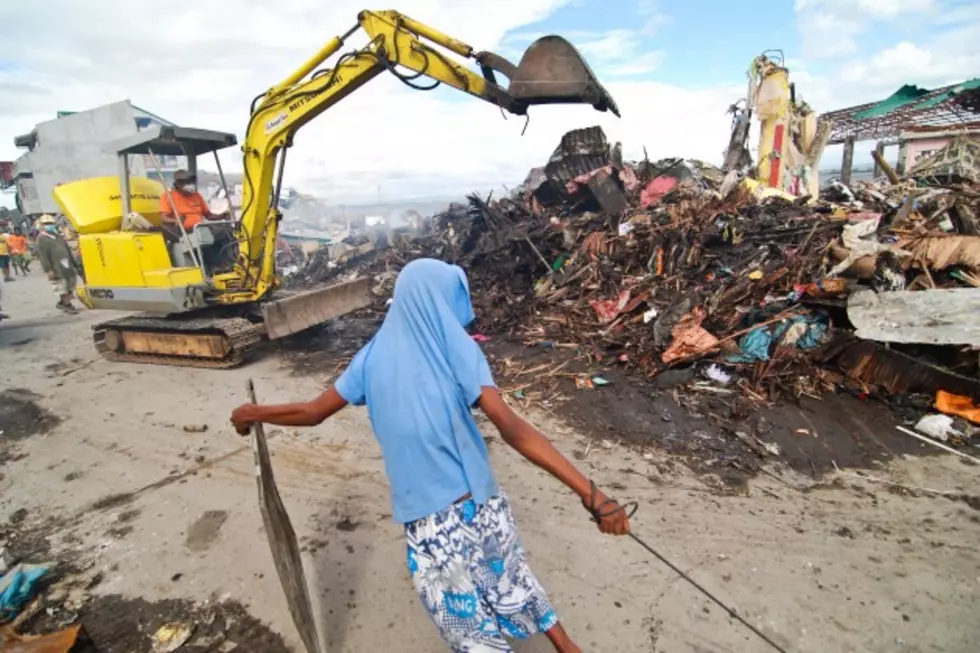
Typhoon Haiyan’s Lasting Effects
A storm that left as quickly as it hit the shores of the southern Philippines archipelago, Hurricane Yolanda formed and dissipated in the span of eight days and devastated the provinces of Leyte and Eastern Samar on November 8th, 2013. The Philippine National Disaster Risk Reduction and Management Council (NDRRMC) website reports a death tally of 4,015 souls and 18,567 injured to-date, and 1,602 still missing or unaccounted for. Thursday, November 21st, it was reported by NDRRMC official Major Reynaldo Balido that an another 1200 names have been added to the list of deceased. Foreign news sources speculate that the final count may be more than double this number. While government efforts to determine the extent of the destruction are ongoing, they count over one million homes uninhabitable or severely damaged thus far.
The Filipino social news website RAPPLER describes the reconstruction effort as the biggest the country has faced since World War II. Nearly $288 million worth of damage was done to crops and infrastructure, and RAPPLER says that the government will soon run out of money to rebuild. Response to the disaster was fast across the country as meals and water were packed for shipment the day of the event. Manila high school student Simon Artadi reported on the Steve Gruber Show that students were pulled from classrooms to begin preparing aid packages.
Flooding, mudslides, wreckage and debris drastically slowed the delivery of food and water and the more remote villagers suffered from lack of potable water and shelter. On November 14th, the USS George Washington arrived in the Philippines to distribute desalinated ocean water and 900 US Marines were on board to help deliver it to the more remote places. The US 7th Fleet reports today that the USS Ashland and the USS Germantown have relieved the George Washington.
In a briefing earlier today, Secretary of the Philippine Department of Interior and Local Government Manuel Mar Roxas said that road access to “all 40 towns in Leyte and 24 towns in Eastern Samar” has been restored and over 35,000 cubic meters of debris has been moved to dump sites. In response to the looting that occurred in the days following the typhoon, an additional 1,611 Philippine National Police officers have been sent to affected areas. There were 2,358 local police officers serving in affected areas before the storm, but only 3 to 4% reported for duty in the days following, according to Secretary Roxas, citing that the local officials suffered as much as the civilians. A journalist from RAPPLER argues that funds received by the government are not being fairly distributed by local government officials, and some are not even reaching the local government but instead are being sent to national officials.
Those affected still rely on external support as they struggle to rebuild what they have lost. Donations can be sent to the Philippine Red Cross at http://www.redcross.org.ph/donate or to Catholic Relief Services in the Philippines http://crs.org/typhoon-haiyan/. Both organizations have relief centers already functioning and providing clean food, water, and safe shelter in the sites hardest hit.
More From 1240 WJIM AM
![Watch Intense Video Showing House Getting Leveled by Tornado [NSFW VIDEO]](http://townsquare.media/site/241/files/2013/11/Tornado.jpg?w=980&q=75)

![California Town Lights Up Controversy by Banning Smoking in Homes [POLL]](http://townsquare.media/site/241/files/2013/11/Smoking1.jpg?w=980&q=75)

![Overly-Enthused Customers Camping Out at Best Buy for Black Friday [VIDEO, POLL]](http://townsquare.media/site/241/files/2013/11/Camping.jpg?w=980&q=75)
![Terrifying ‘Knockout Game’ Features Teens Beating Up Total Strangers [VIDEOS]](http://townsquare.media/site/241/files/2013/11/Knockout.jpg?w=980&q=75)



